I am annoyed. Just wrote a blog update and lost it in cyber space when I went to put it up on the website. I hate the fact that I am so clueless with technology. The next trick will be seeing if I can remember what I wrote. :)
Weekends are too short. Wouldn't it be cool if weekends were 5 days and you only had to go to work 2 days a week? I would get a lot more done at NY Wildlife Rescue Center but I can't complain; I love my day job teaching.
This past Friday, as soon as I got home from school, Chris and I went on a rescue. We took my daughter Hannah and her friend Katie. Hannah loves going on rescues with me and could easily run the farm since she has been looking over my shoulder for the last 12 years. The first stop was to pick up a donkey, a llama (who is getting gelded tomorrow), 4 chickens and 4 rabbits. Once we got everything on the trailer (which is a story in itself) we got them all back to the facility to get settled in.
BOD Member and fellow wildlife rehabber Linda agreed to send her husband (and animal chauffer) Dan to pick up a crow for me in Schenectady. Linda and Dan are great, Dan has helped me out too many times to count by picking up and dropping off animals where they need to be when I am too busy to get mobile. The crow has a broken wing so we took it from Linda's directly to Kelly's and I helped her wrap it until she could get it to the vets. Linda also sent along a baby field mouse that had gotten dropped off to her. I passed that on to Kelly as well. All Creatures Great and Small ... I guess :)
[Continuation copied here as well, to make it easier for our readers to follow....]
I'm not even going to try to retrieve it anymore, maybe Gayle can piece these together but this will work for me. Saturday was a productive day. We got another (very expensive) lumber delivery Friday so we were ready to go.
Chris Bevins and Paul Gillespie (from the GE Wildlife Committee) were here bright and early to get to work on the inside part of the Raptor center. Chris has been worth his weight in gold to this project. None of it would be done if it wasn't for him. He has been coming up every night after work to help me and has gone above and beyond being a good friend. Paul has donated so many hours here helping us that I have lost track. GE is really lucky to have him as an employee.
The GE Wildlife Committee has been very supportive of our cause both financially and with their volunteer labor. We need monetary donations to keep going but the volunteers are vital for keeping the non stop construction going also.
Joe and Michelle came to help in the afternoon and between the five of us, we got the other six raptor aviaries framed out and just about ready for the slots. It was a fourteen hour day and we accomplished the work of ten people.
I originally thought that the Raptor Center would be lucky if it had hawks, owls or falcons in it by fall. I want to have a dedication ceremony and Open House in June to try to hopefully raise some donations to get the rehab exercise flight construction going.
Sunday was Shearing Day. We had 25 llamas and 40 sheep that needed to be sheared. Chris and Michelle were at the facility bright and early. Our shearer Ray Baitsholts [797-5201] and his wife Cheryl (another BOD Member) were not far behind. Lori Spiers and the Middleburgh Girl Scout Troop 2006 (Destiny, Sidney, Meghan) got sheep catching duty.
The sheep were pre-caught Saturday night before it rained and locked up for the night so they didn't get wet. It is tough to shear wet sheep.
As the girls got the sheep to Ray, once sheared they passed them off to me. Just when I thought that no one ever reads these blogs, Grant and Janet showed up. They said they read on my blog that I needed help on shearing day and they were here to volunteer. We had never met but we got to know one another as we wormed, trimmed feet, banded tails and gave every sheep a NYS eartag for future ID.
We worked right through lunch, finished the sheep, and then set up the chutes to run the llamas through for shearing. We had never done the llama herd this way but it worked as well as I thought it would and by dinner time every animal on the farm (that needed it) had gotten a haircut, worming, manicure, etc.
I really want to thank the Girl Scouts, my high school volunteers, my friends and everyone that stopped by who were put to work. Many hands do make light work and I appreciate everyone who volunteers at the facility to tackle these huge projects that I have taken on. The days of being a one man army are over.
As everyone was ready for a shower and a nap, we loaded 3 llamas into Steve and Karen's trailer for their departure to their new home. I love watching animals leave to go to their new homes. I wish that I could keep them all but that isnt practical or my destiny.
WANTED- Homes with caring and compassionate people that want to adopt llamas, sheep, goats for a long term commitment. You must agree to provide for all of their needs and if it ever doesn't work out, they must be returned to our facility. We have put a lot of time and money into getting these sheep and llamas ready for adoption and they are ready to start going to their new homes as approved. Spread the word.... I would love to see many of these llamas stay together and go to homes with other llamas and/or sheep. Email me, we can schedule an appointment for a visit for "Llamas 101". Grant and Janet, I already have three weanlings picked out for you. I will teach you how to finish their halter training ... I can't wait to put some llamas in your life.
It is getting late and I am hoping that this goes to the blog this time. Till next time, feel free to volunteer, send a check for what you can afford or stop by and have a cup of coffee and enjoy the view.
Wes
Please also see our other blog at
http://nywildliferescue.blogspot.com/
It is more active than this one. Always check there for updates, too.
Northeast Llama Rescue was started by Wes and Darcy Laraway of Middleburgh, NY.
Several years ago they rescued their first llama out of a tiny horse pen. Since that day, Northeast Llama Rescue has helped dozens of Camelids from several different states. The primary mission of Northeast Llama Rescue is to educate owners on how to properly care for their animals.
We also offer assistance with a traveling chute to shear, worm, and trim toenails on hard to handle animals. A 'TRUE REPUTABLE BREEDER" should help out the llama down the road that is not being cared for by owners that understand the needs of llamas.
If you know of a llama owner who is no longer able to care for their animals, there is help available. Members of Northeast Llama Rescue will adopt any unwanted animals. Rescue animals will be relocated to farms of members for training and necessary vet work.
If a llama is able to be rehabilitated, he will be available after a careful screening process. All rescues are placed in homes with a contract that says they shall be provided for and can not be sold. In the event a rescue animal becomes unwanted, the llama MUST be returned to Northeast Llama Rescue.
If you share our philosophy and love for the animals, you are more than welcome to join us! There are lots of llamas that need a person to love.
We also rescue farm animals, and are licensed wildlife rehabilitators.
This site is copyrighted by Wes Laraway.
Subscribe to:
Post Comments (Atom)
Northeast Llama Rescue by Wes Laraway
The Northeast Llama Rescue was started by Wes and Darcy Laraway several years ago after they rescued their first llama out of a tiny horse pen. Since that day, the Northeast Llama Rescue has helped dozens of animals in 5 states. The primary mission of Northeast Llama Rescue is to educate owners on how to care for their animals properly. We also offer assistance with a traveling chute to shear, worm and trim toenails on hard to handle animals. If owners get "tired" of the daily maintenance of their herds, members of the Northeast Llama Rescue will adopt or buy, if possible, any unwanted animals. Rescue animals go to the farms or members of the organization.
The Northeast Llama Rescue does not wish to compete with other rescue organizations, although any llama or alpaca is welcome. We need to cooperate to help ALL camelids, not just registered or "nice-looking" ones. Everyone has the right to breed and sell llamas, but a true reputable breeder will "help out" the llama down the road that is not being cared for, regardless of its age, sex or conformation.
Our last rescue came from Central New York. A farm had purchased 9 animals from a Midwest auction. Four of the animals had died from natural causes....starvation? The owner had health problems and no longer wanted the animals. After several other concerned people failed to negotiate their sale, I eventually called and within five minutes we had agreed on a price and the deal was done. The next night, Wes Laraway, Kim Scheurerman and P.J. Wagner went to pick up the animals. The owner informed us that the llamas were wild and could not be handled. Within five minutes all were calmly caught, on lead ropes and in the trailer, with us using a wand and some TEAM Training techniques. The owner thought I was the "llama whisperer" because I got those llamas to do things in five minutes that she couldn't do in a year. She unfortunately knew nothing about handling llamas.
Three hours later, we were back into quarantine at Red Maple Farm starting "damage control". The animals were immediately wormed, fed fresh hay and grain, and watered. All were body scored under three by sight and by feeling through their wool. This hands-on inspection revealed barbed wire that needed to be cut out of the fiber. We decided NOT to shear because it was too late in the year and they were too thin.
Another concern was an ingrown halter. One of the best ways to remove ingrown halters is to undo the buckle(s) and cut the nose band with sharp toenail clippers on each side of the nose. Then gradually, over time, the remaining pieces will fall out. With application of an antibiotic cream, any wounds from the ingrown halter will heal quickly. In this particular case, the halter came out of the nose and was added to the "wall of shame" in our barn (along with the barbed wire and ear tags still on them from the auction they were purchased from). The blood stream stopped within fifteen minutes and now, after a month, we can tell that scarring will be minimal. Please tell everyone you know that owns camelids, NEVER leave a halter on a llama! Even in a week, with wet conditions, a halter can embed itself in a llama's nose.
My biggest concern was the 10 month old female that was exposed to her father. If bred, we decided to abort the unborn cria for the safety and well-being of the young female. None of these five animals were over the age of three years. All of them, over the following months, would need intense care and proper nutrition. The animals were all updated on health requirements and gelded. All of these animals would need training before they could go up for adoption.
New problems continuously arose. Two weeks after they arrived, one of the females surprised us with a weak, constipated fourteen pound male cria. Within hours I knew it wasn't "normal" so mom and baby were moved to a quarantine pen in the barn. The decision was made to supplement the cria with goat colostrum and give him an enema. Although the cria was walking, he continued to strain to relieve himself. Around the clock surveillance did not reveal any nursing or defecation. At two days old, I found very small maggots between the cria's toes and by his umbilical cord. After consulting my vet again, the cria got a bath and dried out in the heated office before going back to mom in the barn. My vet explained that crias born on rainy days must be completely dry or flies will lay eggs in moist areas of umbilical fluid. I've never heard of this problem before but I know now to check my newborn crias for maggots every day. After five days of constant care, we lost "Trooper"....I guess it was not meant to be, but we tried.
The rest of the animals are doing well today. Concerned individuals found them, bought them and will protect them. Today is actually a special day, because the vet did fecals on them and all five of them are parasite free and can join our llama herd. After training and further rehabilitation, by Spring 2001 this group of animals will be available for adoption to carefully approved homes. All animals sold or placed by Northeast Llama Rescue will be adopted with a legal contract. The contract states that if the llama ever becomes unwanted or is not cared for properly, the animal will return to Red Maple Farm for a full refund. I used to think I could save every unwanted llama in the world...I know that I can't . It is too great an undertaking for one farm to rescue all the unwanted camelids out there. For this reason, several other farms have joined in the effort with Red Maple Farm to pool resources and save neglected and unwanted camelids.
Any farm that shares our philosophy that every llama deserves a life with proper care is welcome to join us. We are people who genuinely love all llamas and want to make a difference one llama at a time. Eventually we will print an educational brochure to hand out at events with member farms listed. Don't just tell people that you love your llamas; show people by making a difference and actually save one. Always quarantine new animals for at least one month while getting wormings, vaccines and nutritional needs in order. Always do a fecal exam and consult your vet about when new animals should go out with the herd. Geld all males and most of all BE PATIENT. Llamas are very forgiving animals and will learn to love and trust again with gentle care and training.
The Northeast Llama Rescue does not wish to compete with other rescue organizations, although any llama or alpaca is welcome. We need to cooperate to help ALL camelids, not just registered or "nice-looking" ones. Everyone has the right to breed and sell llamas, but a true reputable breeder will "help out" the llama down the road that is not being cared for, regardless of its age, sex or conformation.
Our last rescue came from Central New York. A farm had purchased 9 animals from a Midwest auction. Four of the animals had died from natural causes....starvation? The owner had health problems and no longer wanted the animals. After several other concerned people failed to negotiate their sale, I eventually called and within five minutes we had agreed on a price and the deal was done. The next night, Wes Laraway, Kim Scheurerman and P.J. Wagner went to pick up the animals. The owner informed us that the llamas were wild and could not be handled. Within five minutes all were calmly caught, on lead ropes and in the trailer, with us using a wand and some TEAM Training techniques. The owner thought I was the "llama whisperer" because I got those llamas to do things in five minutes that she couldn't do in a year. She unfortunately knew nothing about handling llamas.
Three hours later, we were back into quarantine at Red Maple Farm starting "damage control". The animals were immediately wormed, fed fresh hay and grain, and watered. All were body scored under three by sight and by feeling through their wool. This hands-on inspection revealed barbed wire that needed to be cut out of the fiber. We decided NOT to shear because it was too late in the year and they were too thin.
Another concern was an ingrown halter. One of the best ways to remove ingrown halters is to undo the buckle(s) and cut the nose band with sharp toenail clippers on each side of the nose. Then gradually, over time, the remaining pieces will fall out. With application of an antibiotic cream, any wounds from the ingrown halter will heal quickly. In this particular case, the halter came out of the nose and was added to the "wall of shame" in our barn (along with the barbed wire and ear tags still on them from the auction they were purchased from). The blood stream stopped within fifteen minutes and now, after a month, we can tell that scarring will be minimal. Please tell everyone you know that owns camelids, NEVER leave a halter on a llama! Even in a week, with wet conditions, a halter can embed itself in a llama's nose.
My biggest concern was the 10 month old female that was exposed to her father. If bred, we decided to abort the unborn cria for the safety and well-being of the young female. None of these five animals were over the age of three years. All of them, over the following months, would need intense care and proper nutrition. The animals were all updated on health requirements and gelded. All of these animals would need training before they could go up for adoption.
New problems continuously arose. Two weeks after they arrived, one of the females surprised us with a weak, constipated fourteen pound male cria. Within hours I knew it wasn't "normal" so mom and baby were moved to a quarantine pen in the barn. The decision was made to supplement the cria with goat colostrum and give him an enema. Although the cria was walking, he continued to strain to relieve himself. Around the clock surveillance did not reveal any nursing or defecation. At two days old, I found very small maggots between the cria's toes and by his umbilical cord. After consulting my vet again, the cria got a bath and dried out in the heated office before going back to mom in the barn. My vet explained that crias born on rainy days must be completely dry or flies will lay eggs in moist areas of umbilical fluid. I've never heard of this problem before but I know now to check my newborn crias for maggots every day. After five days of constant care, we lost "Trooper"....I guess it was not meant to be, but we tried.
The rest of the animals are doing well today. Concerned individuals found them, bought them and will protect them. Today is actually a special day, because the vet did fecals on them and all five of them are parasite free and can join our llama herd. After training and further rehabilitation, by Spring 2001 this group of animals will be available for adoption to carefully approved homes. All animals sold or placed by Northeast Llama Rescue will be adopted with a legal contract. The contract states that if the llama ever becomes unwanted or is not cared for properly, the animal will return to Red Maple Farm for a full refund. I used to think I could save every unwanted llama in the world...I know that I can't . It is too great an undertaking for one farm to rescue all the unwanted camelids out there. For this reason, several other farms have joined in the effort with Red Maple Farm to pool resources and save neglected and unwanted camelids.
Any farm that shares our philosophy that every llama deserves a life with proper care is welcome to join us. We are people who genuinely love all llamas and want to make a difference one llama at a time. Eventually we will print an educational brochure to hand out at events with member farms listed. Don't just tell people that you love your llamas; show people by making a difference and actually save one. Always quarantine new animals for at least one month while getting wormings, vaccines and nutritional needs in order. Always do a fecal exam and consult your vet about when new animals should go out with the herd. Geld all males and most of all BE PATIENT. Llamas are very forgiving animals and will learn to love and trust again with gentle care and training.











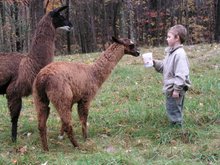
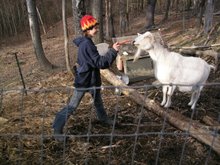

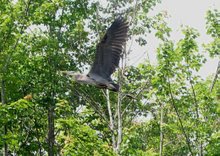

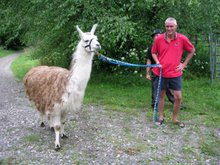
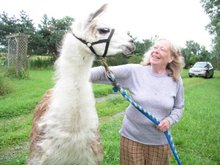
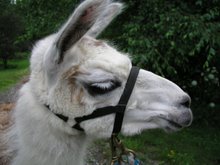








No comments:
Post a Comment